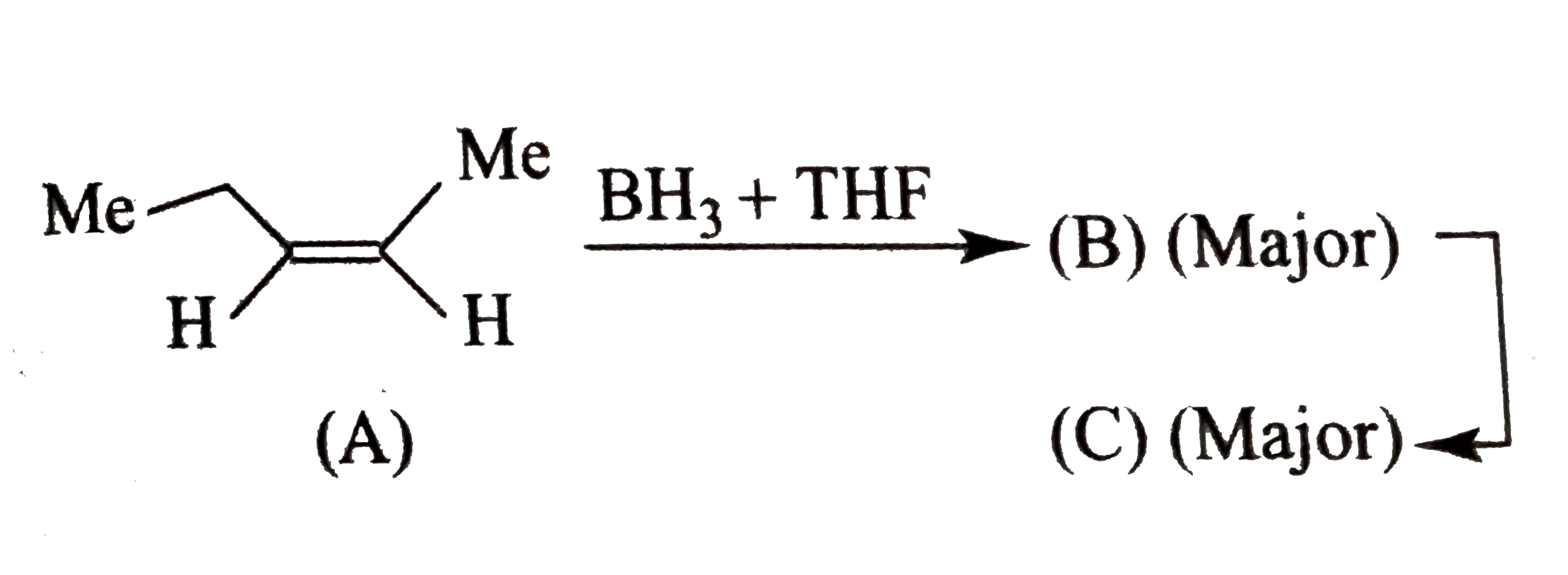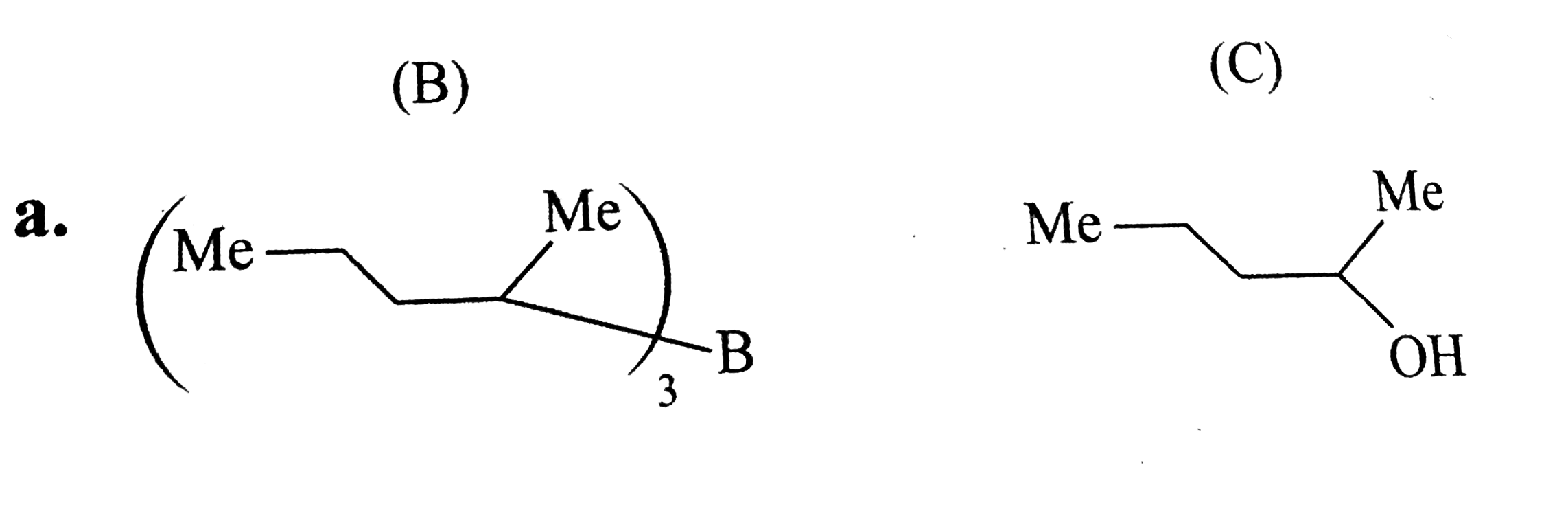What sort of informations can you draw from the following reaction?
(CN)2(g)+2ΘOH(aq)→CNΘ(aq)+CNOΘ(aq)+H2O(l)
Let x be the O.N of C ∴ O.N of c in cayanogen (cn)2=2(x−3)=0orx=+3
O.N of C in cyanide ion CN−=x−3=−1orx=+2
O.N of C in cyantate ion CND = x-3 -2 =- 1 or x=-4
The following four information can be drawn from the above reaction
(i) the reaction in volved decompostion of cyanogen (CN)2 to +2 in CN− ion and increases from +3 in (CN)2 to +4 is CNO− ion of C thus cyangoen is simultaneously reduced to caynide ion andd oxidised to cyantate ion
(iii) it is an example of a redox reaction and a disportination in particular (iv) cyanogen is a pseudohalogen (behave like halogens) while cyanide ions is a peseudhalide ion (behave like halide ion)
Topper's Solved these Questions
- BOOK - PRADEEPCHAPTER - REDOX REACTIONS EXERCISE - NCERT(EXEMPLAR PROBLEMS WITH ANSERS HINTS AND SOLUTION-I)11videos
REDOX REACTIONS
- BOOK - PRADEEPCHAPTER - REDOX REACTIONS EXERCISE - NCERT(EXEMPLAR PROBLEMS WITH ANSERS HINTS AND SOLUTION-II)5videos
REDOX REACTIONS
- BOOK - PRADEEPCHAPTER - REDOX REACTIONS EXERCISE - NCERT (QUESTIONS AND EXERCISES WITH ANSWERS)10videos
REDOX REACTIONS
- BOOK - PRADEEPCHAPTER - P-BLOCK ELEMENTS (NITROGEN FAMILY)EXERCISE - Competition focus jee(main and advanced)/ medical entrance special) (VIII. Assertion-Reason Type Questions)10videos
P-BLOCK ELEMENTS (NITROGEN FAMILY)
- BOOK - PRADEEPCHAPTER - S-BLOCK ELEMENTS (ALKALI AND ALKALINE EARTH METALS) EXERCISE - Assertion -Reason Type Question (Type 2)19videos
S-BLOCK ELEMENTS (ALKALI AND ALKALINE EARTH METALS)
Similar Questions
Knowledge Check
- Question 1 - Select One
 H2O2+ΘOHA
H2O2+ΘOHA B
B C
C D
D
- Question 2 - Select One or More
Which of the statements are correct about the following reactions ?
MeCHO+[Ag(NH3)2]⊕+ΘOH+→MeCOOΘ+AgAThe equivalent weight of MeCHO is 22.BThree moles of ΘOH are required in the above reaction.CMeCHO is an oxidising agent.DReduction of [Ag(NH3)2]⊕ occurs. - Question 3 - Select One
Observe the following reaction,
2NO2(g)+2OH−(aq)→NO−3(aq)+H2O(l)+NO−2(aq) in this reaction,AOH− is oxidised to H2OBOH− is reduced to H2OCNO2(g) is reduced to NO−2 (aq) and oxidised to NO−3 (aq)DNO2(g) is reduced to NO−3(aq) and oxidised to NO−2 (aq)
Identify the substance oxidised substance reduced, oxidising agent, and reducing agent for each of the following reactions:
a. 2AgBr(s)+C6H6O2(aq)→2Ag(s)+2HBr(aq)+C6H4O2(aq)
b. HCHO(l)+2[Ag(NH3)3]⊕+3ΘOH(aq)→2Ag(s)+HCOOΘ(aq)+4NH3(aq)+2H2O(l)
c. HCHO(l)+2Cu2+(aq)+5ΘOH(aq)→Cu2O(s)+HCOOΘ(aq)+3H2O(l)
d. N2H4(l)+2H2O2(l)→N2(g)+4H2O(l)
d. Pb(s)+PbO2(s)+2H2SO4(aq)→2PbSO4(s)+2H2O(l)View SolutionWhat are conjugate acids and bases ? Select the conjugate acid-base pair from the following reactions:
NH3(aq)+H2O(l)⇔NH+4(aq)+OH− (aq)
HCN(aq)+H2O(l)⇔H3O+(aq)+CN−(aq)View SolutionWrite balanced ionoic half equation (oxidation and reduction) for each of the following reactions:
(a) Mn3+(aq)→MnO2(s)+Mn2+(aq)
(b) Mn(s)+NOӨ3(aq)→Mn2+(aq)+NO2(g)
(c ) H2O2(aq)+Fe2+(aq)→Fe3+(aq)+H2O(l)
(d) Te(s)+NOӨ3(aq)→TeO2(s)+NO(g)View SolutionThe heat liberated in the following reaction
H+(aq)+OH−(aq)→H2O(l) isView SolutionIn the reaction
H2O2(aq)I−−−→H2O(l)+12O2(g), where I− isView Solution

